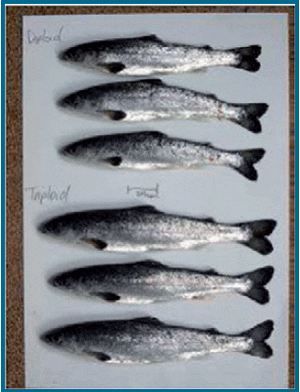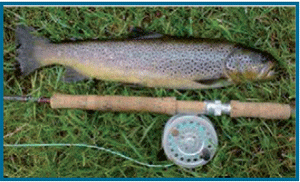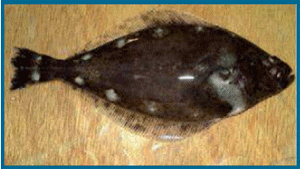Sexual maturation can have adverse impacts on the health, welfare and productivity of farmed stocks due to associated changes in physiology and behaviour.
Secondly, if farmed fish escape, there may be a potential impact on the genetics of wild stocks through interbreeding.
Research to tackle these problems has been done using a range of management strategies including:
- photoperiod manipulations to delay maturation outside the harvest window;
- production of monosex populations where sexual dimorphic growth allows harvesting prior to maturation;
- sterility by means of triploidisation.
The knowledge gained has led to the implementation of protocols, guidelines and practices within the industry that significantly improves the sustainability of the sector, generates growth and increases profitability. As an example, photoperiod regimes have been optimised and standardised in the salmon on-growing industry, considerably reducing the prevalence of early maturation during the first year at sea. Meanwhile monosex production has been implemented in the portionsize rainbow trout industry in combination with sterility to remove problems associated with stock maturation. Similar work has been carried out in a number of other commercially important species in Scotland including Atlantic cod, halibut and haddock. However, a lot of research, development and knowledge exchange are still needed to help the industry secure sustainable growth. In this article, we describe three ongoing research priorities that are being investigated in collaboration with a number of industrial partners.
Triploid salmon
Although not a new concept in itself, triploid induction is currently the only commercially acceptable method to ensure sterility. Originally tested in the late-80’s/early 90’s as a means to prevent pre-harvest maturation, triploidisation of salmon was abandoned as triploid stocks showed reduced performance and a high occurrence of deformity. However, with rapid expansion of the industry in recent years and increasing public concern over the potential genetic impacts of farmed escapees, the industry is keen to re-explore the potential of triploidy to ensure reproductive containment. The Genetics and Reproduction Group is now leading an FP7 EC funded project SALMOTRIP (221115, www.salmotrip.stir.ac.uk) involving key R&D and SME partners from Scotland, Norway, France and the Netherlands to perform a full-scale feasibility study of commercial triploid salmon production.
Results so far indicate that triploid salmon can outperform their diploid siblings (up to 30% bigger, Figure 1) and there is a clear need for triploid specific breeding programmes. Out-ofseason (S0+) triploid smolts were also produced for the first time: this is a significant development for the industry which heavily relies on inputs of S0+ fish to ensure year round supply of salmon.
Key risk areas that have been identified are current salmon diets and environmental conditions. Dietary deficiencies in triploids need to be investigated further. We have explored thermal, oxygen, and nutritional thresholds, and related these to functional performance (e.g. exercise, growth and feed utilisation). The work has increased our understanding of cellular physiology and will help identify sites where triploids should not be grown. Finally, a large scale customer perception analysis of triploid products is ongoing with the view to identify marketing strategies.

Triploid brown trout
Sport fishing for trout within the UK in both still and running waters has an estimated value exceeding £500 million p.a.. Most trout fisheries rely partly, or in many cases entirely, on stocking of reared fish to maintain catches. Reared brown trout often differ genetically to their wild counterparts and the local wild trout gene pools are at risk from interbreeding with stocked fish. As a preventative measure, the Environment Agency has recently implemented the “National Trout and Grayling Strategy”. Under this Strategy, consent is only given to stock rivers with brown trout if they are derived from the local population or they are non-fertile, all-female triploid fish.
Little information on triploid brown trout performance is available, so the Genetics and Reproduction Group initiated research to explore the production and assessment of triploid brown trout. This research will create and optimise induction protocols which will be directly transferable to farmers. Knowledge on culture performance (including growth, deformity prevalence and optimised environmental requirements) and behavioural interactions under natural/semi-natural conditions (feeding location, habitat choice, swimming ability and thermal tolerance) will be developed through a series of experimental and commercial field trials. Overall, this area of research aims to transfer working protocols and guidance to the UK farming and sports fishing industries.

All female halibut
The marine aquaculture sector in the UK is dominated by salmon on-growing. However, there is an increasing realisation that the integration of alternative species (ranging from finfish to macroalgae) will optimise the use of available resources, increase productivity and ultimately lead to a more sustainable industry. One alternative species is Atlantic halibut which has been farmed in the UK for almost 20 years. However, a key bottleneck restricting the productivity of halibut farming is that patterns of growth and sexual maturation are different between sexes. Male halibut reach sexual maturity approximately 2-3 years earlier than females at a size that is below the optimal harvest weight. Females reach harvest size prior to any sexual development, so there is a clear advantage in rearing monosex (all female) stocks over mixed sex populations which is considered essential to the profitability of the halibut sector.
With the support of the Scottish Aquaculture Research Forum, the Genetics and Reproduction Group has been examining two methodologies that could potentially allow the commercial production of all-female halibut stocks. Firstly we explored the use of flow cytometry to sort halibut semen based on cellular DNA content, a technique employed increasingly in terrestrial agriculture. However, as we were unable to demonstrate any measureable difference in DNA content in spermatozoa in halibut (or any other commercially important fish species we tested) this technique is of no use to the sector until some other form of sex linked marker is identified.
In parallel to this work we have also refined a protocol to produce neomale halibut broodstock. In this process juvenile halibut were briefly fed with steroid treated feed during sexual differentiation. Following treatment, 97% of the population was phenotypically male although the 50:50% male to female genotype ratio was unaffected. When they reach sexual maturity the normal male (male phenotype and genotype) will produce mixed sex offspring while the neomales (male phenotype and female genotype) will naturally produce all female offspring.

This is a long term investment as it has taken 3 years for the first fish to reach sexual maturity so work is now in the pilot phase of validating methodologies to confirm neomale status and thus guarantee all female progeny production in the coming years. The collaboration, now in its 4th year, has helped the sector realise a dream of producing all-female halibut. Nevertheless, new opportunities are being sought to continue the partnership and help upscale the neomale identification and ensure that the industry can make all-female production a commercial reality in the coming years. Ultimately it is hoped this work will improve the competitiveness of the UK industry and may help return investor confidence in the British marine finfish farming sector as a whole.
March 2012


